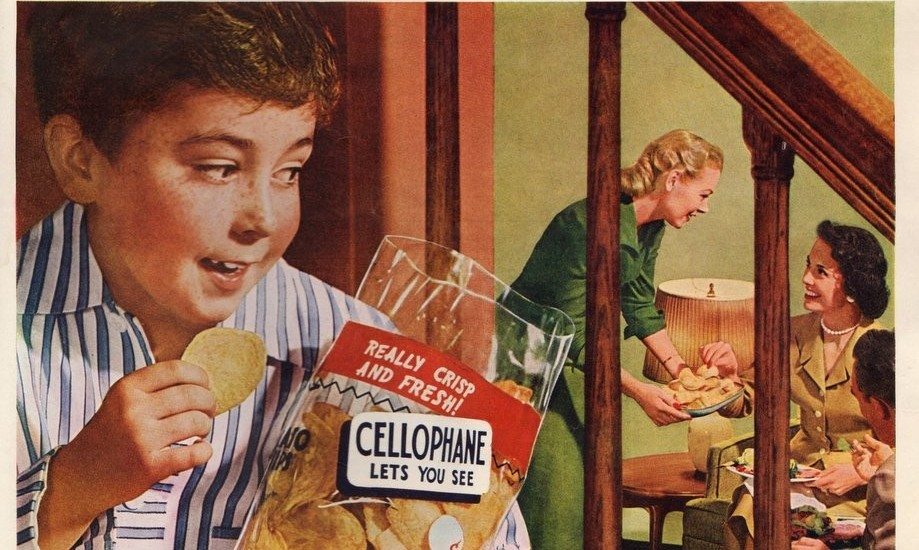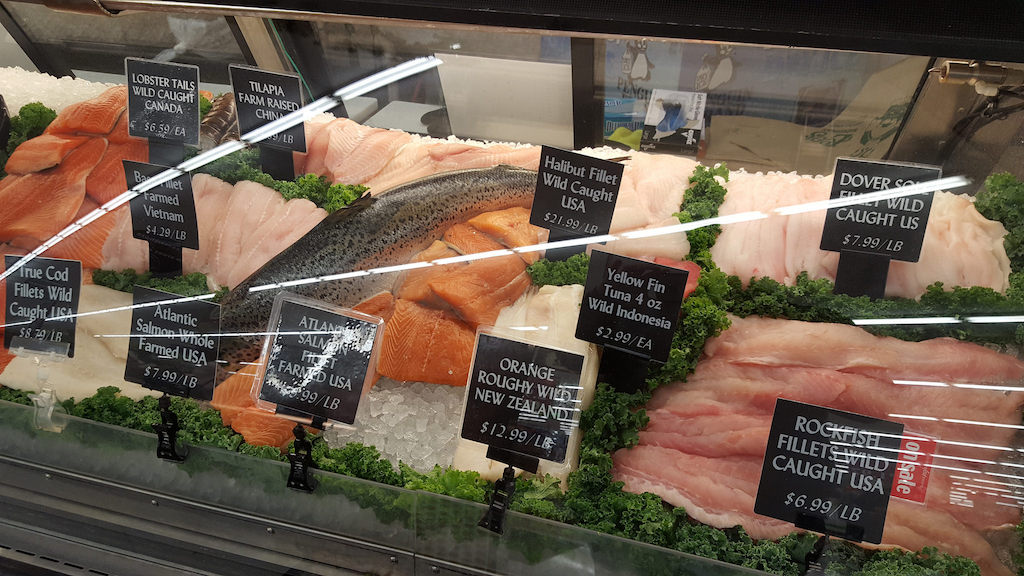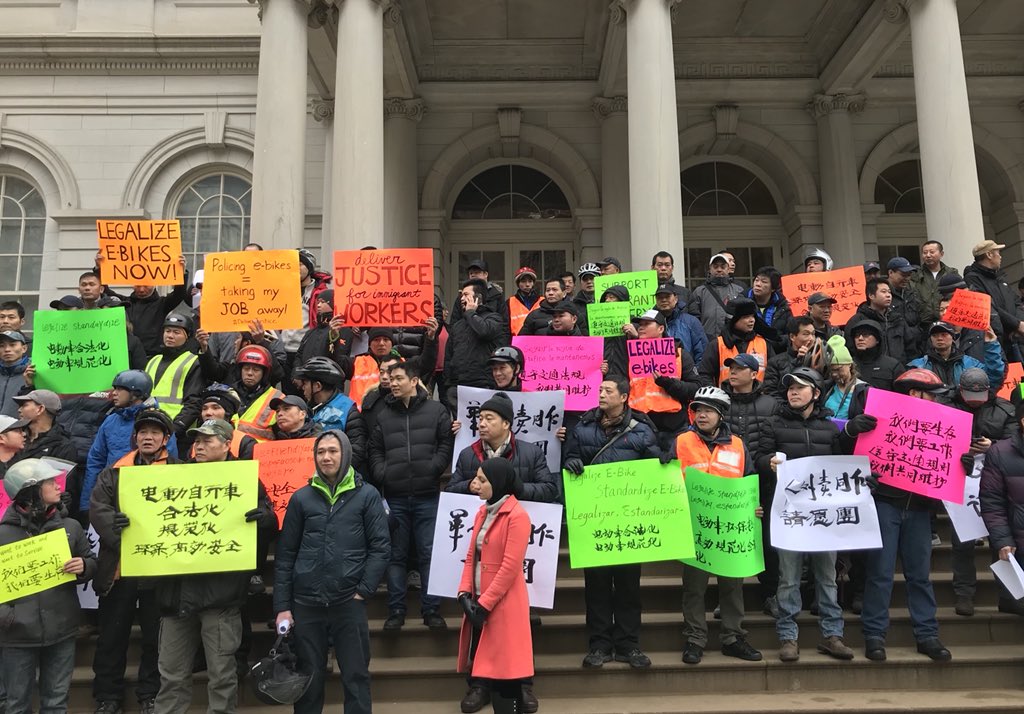These anti-Seamless ads are taking over the New York City subways. Who’s behind them?
It started on our Tuesday morning commute. Scene: the New York City subway headed toward Manhattan from Brooklyn. It’s an ideal playground for tech-startup advertisers looking to broadcast their message to captive commuters who, in the midst of an ongoing transit crisis, are spending more time on the trains than ever. Nestled alongside banners promoting free STD testing, we spotted a poster for Slice, a start-up pizza delivery service.
“Making pizza is my passion. But pricey online ordering fees really hurt my shop. Companies charge us around 22% per order just to show up in their apps, making us unable to turn a profit,” the ad read, in the voice of Chuck, from Billy’s Pizza & Pasta in Brooklyn.
The ad appeared to take aim at larger, better-known competitors—like Grubhub, the parent company of ubiquitous delivery service Seamless, which boasted 10 million customers in the third quarter of 2017 alone—for squeezing local businesses.
It went on: “We worried we’d have to add high delivery fees or increase our prices just to stay afloat. Until we discovered Slice. They give us online ordering that doesn’t cost an arm and a leg.”
 Claire Brown
Claire Brown The ad was a notable departure from the normal startup-ad rhetoric, which tends to focus on the promise of convenience—grocery delivery makes “adulting” easier!—and comfort. New York City’s subway ads double as a cultural touchstone, drawing national attention as brands use the space to stretch the boundaries of prudence and political correctness. Thinx, for example, ran a campaign for “underwear for women with periods” that suggestively depicted grapefruits and dripping egg yolks. (It was initially rejected.) Meanwhile, online ordering services like StreetEasy and Seamless have been criticized for celebrating gentrification, and the underwear company MeUndies was also spotted on Tuesday advertising briefs to wear “next to that yoga studio that used to be a hotdog cart.”
So, was the Slice ad further evidence of a backlash against Seamless? It piqued our interest: We began reporting on what seemed like a mini-revolt over restaurants’ raw deals with Seamless more than a year ago, when independent businesses in New York told us that major online ordering platforms charged commissions above 25 percent (an untenable number for any restaurant trying to operate on the industry’s notoriously razor-thin margins).
First, we covered Brooklyn’s Endless Summer sandwich shop, which was pleading its case to customers to order direct via notes it slipped into their delivery bags. And just a few months ago, in Iowa City, local restaurateurs banded together to launch Chomp, an online ordering alternative they hoped would catch on before Grubhub came to town.
But we’d never seen an ad campaign aimed directly at regular commuters making the same argument. And we had a suspicion subway ads don’t come cheap. So we wondered: Is Slice really a better-feeling alternative to the big platforms, or was it just co-opting the ethos of the struggling independent restaurant?
After calling the company, the answer seems to be a little of both. Slice certainly offers some restaurant-side perks, like charging a $1.95 flat fee per order instead of a hefty commission. The company says the rate averages out to less than seven percent of each order, and is therefore easier for your neighborhood pizzaiolo to stomach.
On the other hand, Slice is also the kind of sprawling company that operates in all 50 states, represents 8,000 pizzerias, spends “six figures” on a public transit ad campaign that is estimated to reach five million people every day, and aspires to be the “fourth largest pizza chain” behind Pizza Hut, Domino’s, and Papa John’s. (The company declined to say precisely how much its campaign cost, but a similar subway buy could cost as much as $185,000 a month, according to New York Business Journal.)
Ryan Scott, Slice’s chief marketing officer—and, interestingly, a former marketer at Seamless and Grubhub—says the decision to brand the platform as a better deal for businesses wasn’t a dig at his old companies. But that doesn’t seem entirely true. An advertising deck shared with the New Food Economy says the ad campaign “will call out the parasitic ordering companies” that hurt pizzerias. It also criticizes Seamless, by name, for subway ads that “encourage consumers to take advantage of their restaurants,” and “ultimately create a rhetoric that demeans and dehumanizes small businesses.”
Scott says the campaign emerged after focus group testing that pitted a simple message (“pizza delivery, fast and easy”) against the content of the current campaign and showed that potential customers respond strongly to the news that delivery services can take more than a quarter of a restaurant’s sales for their services.
So the ad we spotted wasn’t for a platform that’s sticking its neck out for the little guy. Rather, it was an ad for a platform that figured out what its focus group eaters want to hear, and then fed that message back into the subway system for 5 million minds to chew on. It might be better for pizza shops. It might be better for eaters. But who is it really best for? Slice.
And that may be because Slice seems to want to follow in the footsteps of Domino’s—the once stalwart brick-and-mortar chain that has recently begun referring to itself as a “tech company.” Even though overall pizza sales are falling, online delivery is actually a growing sector for chains, according to consultant Aaron Allen, who wrote a LinkedIn post examining that growth. Online orders for Domino’s, Pizza Hut, and Papa John’s comprise 15 percent of all pizza industry revenue alone. And over the last decade, Domino’s stock prices have grown by 3,000 percent, a boom that coincided with the launch of a much-beloved online ordering system. (No word yet on how the boom in online pizza ordering might be affecting independent pizzerias, specifically. Grubhub declined to share data about its pizza order volume with The New Food Economy, citing its status as a publicly traded company.)
For now, Scott says Slice is focused on bringing into its digital fold every independent pizzeria in the country. But we live in a world of publicly traded companies and a $1.95 in revenue on every order isn’t going to satisfy hungry investors forever. So, Scott says, Slice may be looking at an “out of the box” pizza product (translated out of startup jargon, that sounds a hell of a lot like a franchise), or “verticalizing” the business in the manner of a Zappos or a Chewy.
It’s an odd proposal: fighting the Seamless-ification of delivery through a Dominos-ification. And we don’t yet know if consumers will buy Slice as the internet-savvy, helpful nephew providing tech support for suburban mom-and-pop pizza joints that, say, don’t have a functioning website and are just struggling to keep up.
We never answered the question of whether Slice can dethrone Seamless (or even if it should). But at this point in our reporting we now have three examples showing that restaurants are ready to take their gripes with Grubhub, Eat24, and UberEats to the public: a sandwich shop slipping notes into delivery orders, a collective local effort to preempt Grubhub’s appearance on the scene, and now, a six-figure marketing campaign co-opting the independent spirit of those restaurateurs.
We say three anecdotes make a trend.










